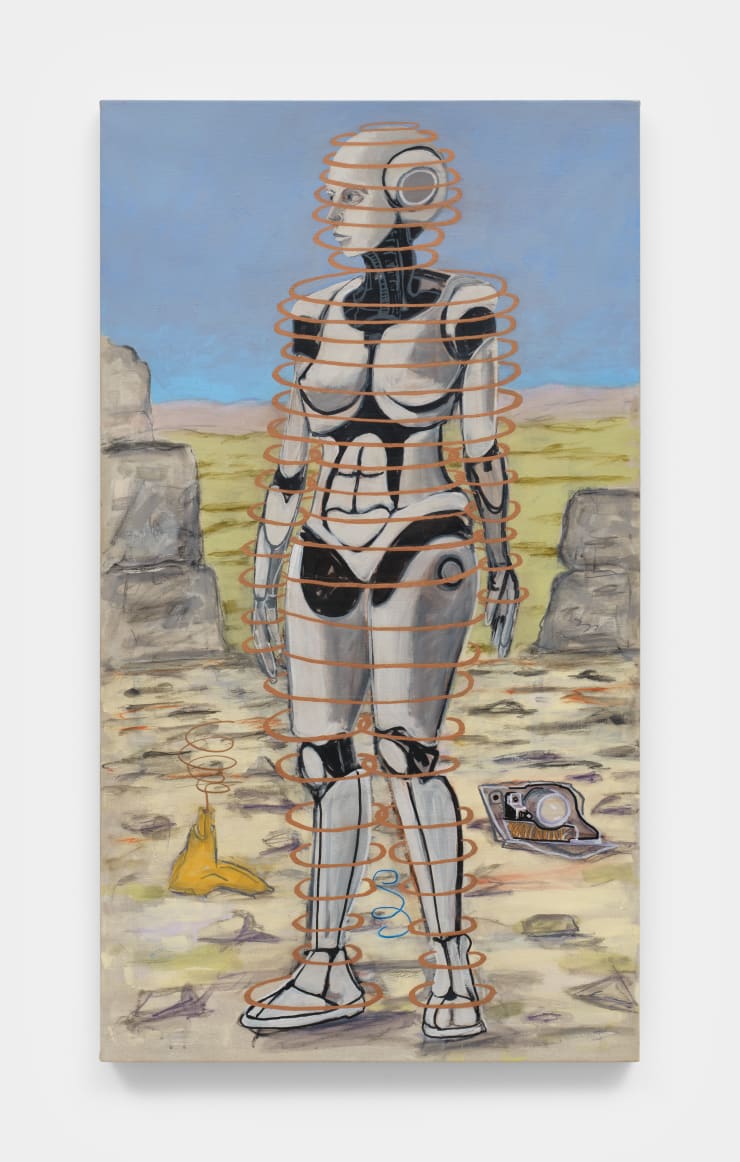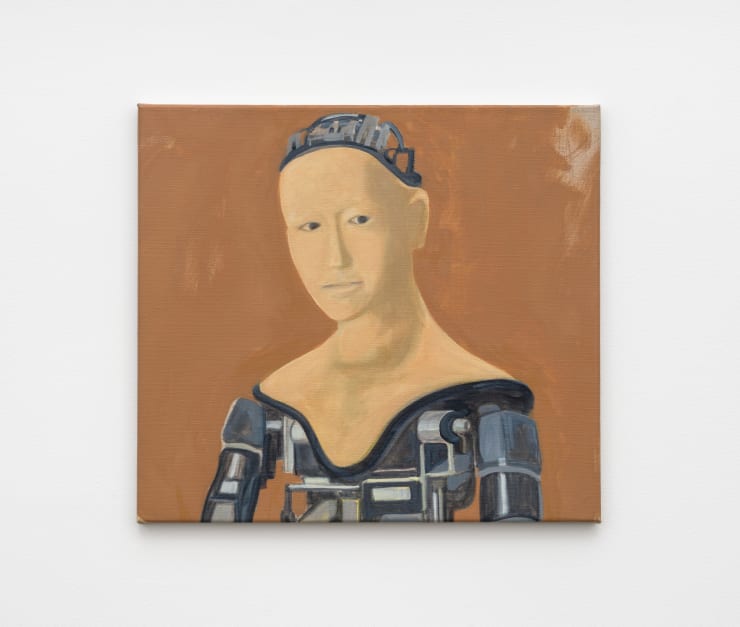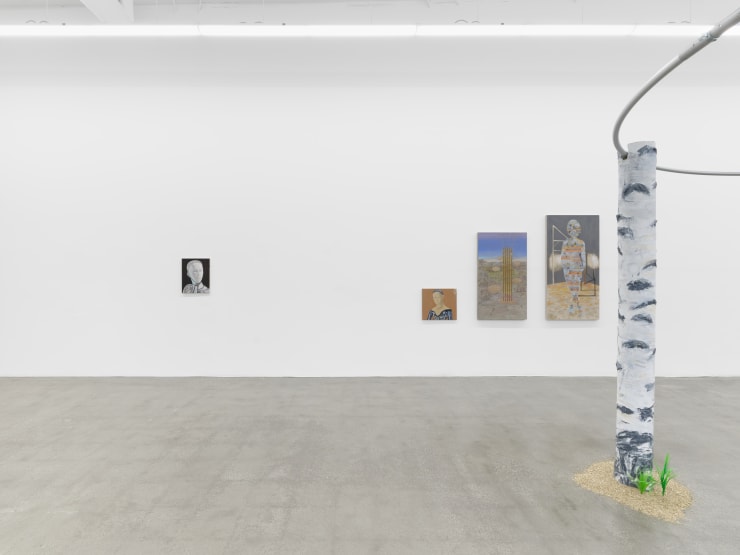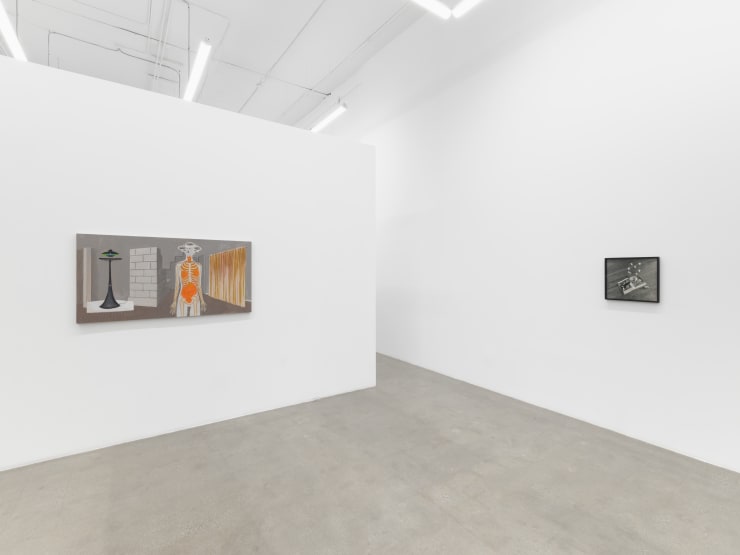William Leavitt "Gothic Electronica"
Sebastian Gladstone Gallery is pleased to present Gothic Electronica. A concurrent exhibition of work by the artist will be on view at Marc Selwyn Fine Art at 9953 S Santa Monica Blvd, Beverly Hills, CA 90212. Together, both exhibitions survey fifty years of the artist’s work.
Leavitt has spent his career as an artist in Southern California, drawing endless inspiration from the architecture and mass media culture of Hollywood. By the time Leavitt began his artistic practice, Pop Art and Minimalism had begun to run their course. As an important figure in the first generation of California conceptual art, Leavitt was able to use these prior movements to synthesize his personal experiences and impressions of the California landscape. A writer and filmmaker himself, Leavitt’s works have always been rooted in narrative storytelling and intrinsically linked to theater, film, and the media culture of Los Angeles.
Gothic Electornica provides a comprehensive look through Leavitt’s career, beginning with photographs from the 1970s and running up to a series of recent science fiction-inspired cyborg paintings which seem to foreshadow the rapid merging of human beings, robotics, and high-tech intelligence. Since many of his paintings and photographs were initially utilized as stage props and settings, Leavitt’s formal gallery shows have often conflated fine art and theatrical installations. Uncanny science fiction narratives, melodrama, and cinematic moments that seem familiar, yet out of place, run through Leavitt’s entire oeuvre.
Film and the intrigue and mystery of Hollywood storytelling seep through Leavitt’s early work. Utilizing photographic montage, Are You Sure She Said That? Yes, Absolutely, The Consequences Can Be Real, and Study for the “Lure of Silk,” all conjure up the theatricality of film. His installation piece, Gothic Curtain, is heavily influenced by Hammer Film’s 1958 Dracula, evoking the dark, melodramatic tone and thrilling, ominous aesthetic that characterized the romantic horror genre.
While not all of Leavitt’s works present a detailed narrative, they set up contexts within which the viewer is invited to construct personal associations with Leavitt’s references.
As the artist describes it, “Because my work tends toward narrative, I sometimes imagine a setting for paintings - the theme restaurant at LAX would look right in the boardroom of an aerospace firm, or the painting of the Manta ray might fit the wood-paneled hallway of a seafood restaurant. The photos I did in the 1970’s might act as film stills, with installations functioning as a kind of stage set. Recently I’ve done portraits of cyborgs who could operate in a more theatrical realm, perhaps as characters in a sci-fi movie. My work is about things of the world as props for narratives, sequences of objects, places, persons, their combinations evoking random choice, or a mood, a kind of blank absurdity, or the suggestion of a story.”
Since the late 1960s, Leavitt’s work has been the subject of numerous one-person exhibitions including an extensive survey at the Museum of Contemporary Art, Los Angeles in 2011, curated by Ann Goldstein and Bennett Simpson. His work has been featured in thematic exhibitions around the world and is included in the permanent collections of the Hammer Museum, Los Angeles; Los Angeles County Museum of Art, Los Angeles; The Museum of Modern Art, New York; the Getty, Los Angeles; and the Stedelijk Museum, Amsterdam, and many others.
-
 William Leavitt, Sidreal Time, 2014
William Leavitt, Sidreal Time, 2014 -
 William Leavitt, Why Me?, 2024
William Leavitt, Why Me?, 2024 -
 William Leavitt, Robot Device, 2018
William Leavitt, Robot Device, 2018 -
 William Leavitt, Circuit Figure Standing, 2023
William Leavitt, Circuit Figure Standing, 2023 -
 William Leavitt, Female Robot, 2018
William Leavitt, Female Robot, 2018 -
 William Leavitt, Cyborg 12, 2023
William Leavitt, Cyborg 12, 2023 -
 William Leavitt, Cyborg 2, 2022
William Leavitt, Cyborg 2, 2022 -
 William Leavitt, Random Selection: Sand, Smoke, Meat, Plant,, 1969
William Leavitt, Random Selection: Sand, Smoke, Meat, Plant,, 1969 -
 William Leavitt, Random Selection: Dog, Wire, Marshmallows, Mice,, 1969
William Leavitt, Random Selection: Dog, Wire, Marshmallows, Mice,, 1969 -
 William Leavitt, Random Selection: Bag, Glove, Fire, Mice,, 1969
William Leavitt, Random Selection: Bag, Glove, Fire, Mice,, 1969





















